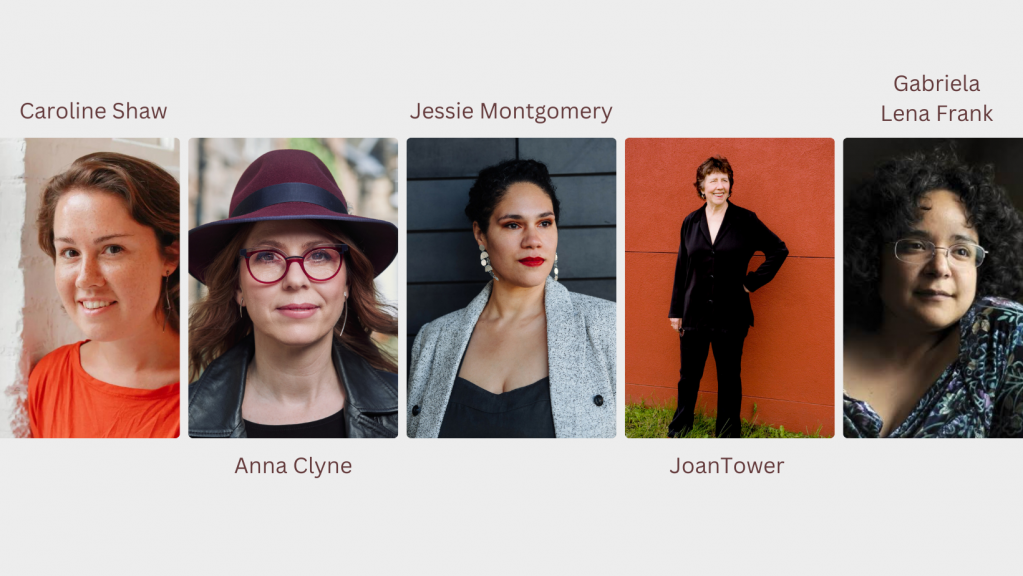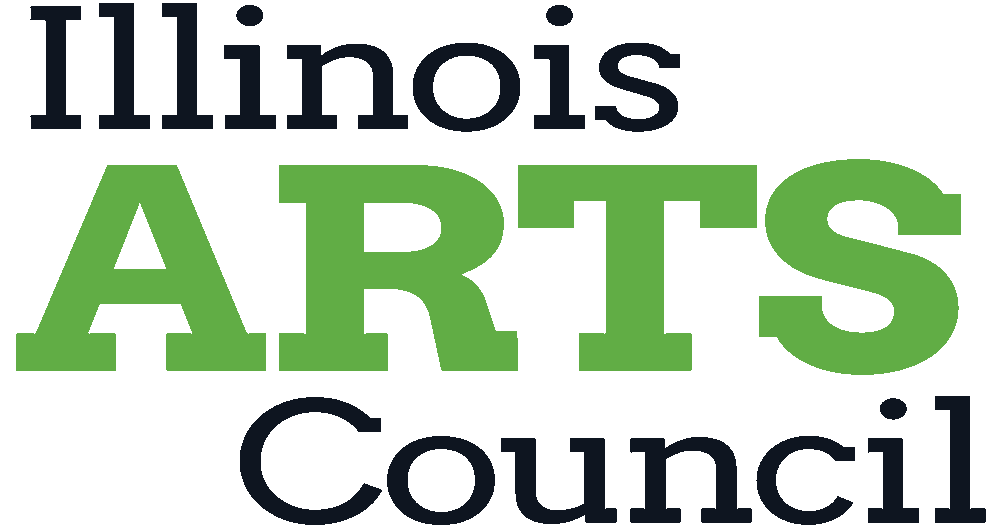Contemporary Female Composers You Should Know

In honor of Women’s History Month, we’re celebrating five extraordinary female composers making valuable contributions to classical music today. While we are growing accustomed tto seeing female composers' names on concert programs, this is a relatively recent trend. In 2022, the New York Times reported that compositions by women and people of color made up 23% of pieces performed by American orchestras, up from about 5% in 2015. NPR reported that no female composers appeared on the programs of either the Philadelphia Orchestra or the Chicago Symphony Orchestra in their 2018–19 seasons. None. Thanks in part to protests for racial justice after the murder of Geroge Floyd, the #MeToo movement, and the COVID-19 pandemic, the landscape has started to shift. However, there is still work to be done.
***
Caroline Shaw
At thirty years old, Caroline Shaw was the youngest-ever recipient of the Pulitzer Prize for Music when she won the prize in 2013 for Partita for 8 Voices. Shaw stubbornly resists classification, and her output is as diverse as her stylistic influences. As she writes in her bio, “Caroline Shaw is a musician who moves among roles, genres, and mediums, trying to imagine a world of sound that has never been heard before but has always existed.” She has collaborated with a wide range of musicians, from rapper Nas to soprano Renée Fleming. In addition to the Pulitzer, she has won several GRAMMY awards, an honorary doctorate from Yale, and a Thomas J. Watson Fellowship.
Suggested listening: Entr’acte
Shaw wrote Entr’acte for the Brentano Quartet in 2011 while a graduate student at Princeton University. Taking inspiration from Haydn’s String Quartet Op. 77 No. 2, Shaw riffs on the Classical minuet and trio, nodding to forms, techniques, and harmonies of the past but infusing them with refreshing dissonances, idiosyncratic rhythms, and extended string techniques. Haydn’s often abrupt and playful transitions also served as a jumping-off point for Entr’acte. The resulting piece is at once comfortingly familiar and wildly new. As Shaw writes, “The colors are vivid and familiar, and the shapes of the leaves follow a pattern that you seem to know until you don’t.”
Anna Clyne
London-born composer Anna Clyne is one of the most in-demand composers today, working with orchestras, choreographers, filmmakers, and visual artists around the world. According to Bachtrack, Clyne is one of the top ten most-performed contemporary composers worldwide and was the most-performed living female British composer in 2022 and 2023. She currently serves as Composer-in-Residence with the Helsinki Philharmonic Orchestra, Composer-in-Residence at the BBC Philharmonic, and Artist-in-Residence with the Symphony Orchestra of Castilla y León.
Suggested Listening: This Midnight Hour
This Midnight Hour draws inspiration from two poems: Charles Baudelaire’s “Harmonie du soir” (“Evening Harmony”) and a poem by Juan Ramón Jiménez that simply reads, “Music, a naked woman, running crazed through the pure night!” The propulsive energy of the opening creates an atmosphere of urgency and foreboding that is heightened by sudden shifts in textures, stark dynamic contrasts, and unsettling pauses. Lyrical melodic elements try to break through, but each attempt is slightly off-kilter, including a purposely out-of-tune organ grinder waltz. Eventually, a delicate melancholy melody arises from the tumult, introduced by the solo bassoon. We are lulled into a dream-like state before a final timpani blow brings us back to reality.
Jessie Montgomery
Currently the Mead Composer-in-Residence of the Chicago Symphony Orchestra, Jessie Montgomery has already established herself as a composer, violinist, and educator of international acclaim. A recipient of the Leonard Bernstein Award from the ASCAP Foundation and the Sphinx Medal of Excellence, Montgomery’s works are performed frequently by leading musicians and ensembles around the globe. She captures the 21st-century American experience in her music by mixing elements of vernacular music, improvisation, poetry, and social awareness into classical frameworks. Most recently, she won the GRAMMY Award for Best Classical Contemporary Composition for Rounds, her first work for solo piano and string orchestra.
Suggested Listening: Rounds
When writing Rounds, Montgomery was inspired by the imagery of T. S. Eliot’s Four Quartets, which meditate on our relationship with time and place within the universe. Montgomery was also drawn to the work of contemporary biologist and philosopher Andreas Weber, who writes about the interconnectedness of all living things. As Eliot does in Four Quartets, Montgomery suggests that to understand this interrelation, we must “slow down, listen, and observe both the effect and the opposite effect caused by every single action and moment.” Mirroring fractals found in nature, Rounds is cast as a rondo within a rondo within a rondo and plays with opposing musical gestures of action and reaction, dark and light, and stagnancy and swiftness.
Joan Tower
John Tower is widely considered one of the most important living American composers. She has received numerous accolades throughout her six-decade career as a composer, performer, and educator, including the League of American Orchestra’s highest honor, the Gold Baton, in 2019. Vibrant colors, rhythmic propulsion, and textural contrasts characterize much of her work. Percussion instruments also feature prominently, which she credits to her upbringing in Bolivia, where she encountered complex dance rhythms and eclectic percussion instruments.
Suggested Listening: Fanfares for the Uncommon Woman
Fanfares for the Uncommon Woman is a set of six short works, or one longer work in six parts, composed between 1987 and 2016. Celebrating “women who are adventurous and take risks,” each fanfare is dedicated to a different inspiring woman in music. Considered a feminist counterpart to Aaron Copland’s iconic Fanfare for the Common Man, Part I employs the same brass instrumentation plus extra percussion. It is dedicated to trailblazing conductor Marin Alsop, seen in the clip above.
Gabriela Lena Frank
Recently named one of the “35 Most Significant Women Composers in History” by the Washington Post, composer and pianist Gabriela Lena Frank was born in Berkley, California, to a Peruvian/Chinese mother and Lithuanian/Jewish father. Throughout her career, her multicultural heritage has been central to her compositional identity, her voice a true amalgam of her lived experiences as a multiethnic Latina and the paradoxes inherent in that reality. Her early days were “filled with Oriental stir-fry cuisine, Andean nursery songs, and frequent visits from our New York-bred Jewish cousins,” she writes. Her musical upbringing was just as diverse, with her piano repertoire spanning not only the traditional works of Bach and Mozart but also Scott Joplin’s rags and her own early compositions that carried overtones of Peruvian folk music.
Suggested Listening: Elegía Andina
Frank wrote Elegía Andina (Andean Elegy) in 2000 after visiting her mother’s birthplace in Peru for the first time. It is one of her first formal compositions to explore her multicultural heritage. Most of the Peruvian stylistic elements appear in the flutes, which use pentatonic harmonies and performance practice techniques associated with the arca/ira zampoña double-row panpipes. Though their music is steeped in Peruvian traditions, the flutes do not quote any folk tunes directly. The only time an extant folk melody is referenced is in the brass (playing the tune “El Cholito”). Lena Frank overlays these distinctly Peruvian features onto an orchestral texture that completely differs in harmonic and stylistic language and lacks any folk influences. The result is a tone poem that evokes both the dramatic landscape of the craggy Andes mountains and a feeling of dissonance with one’s surroundings, alongside a longing for home and a sense of belonging.



